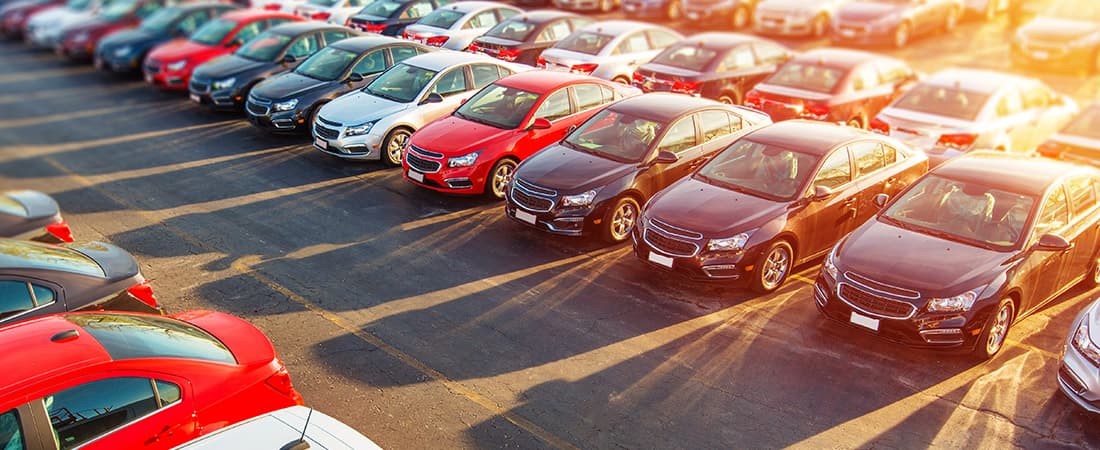Mar 19, 2018
Why the Car Industry is Still a Hotbed of Innovation
All the reasons why automobiles continue to drive our economy forward.

Probably no other invention has shaped modern life as much as the automobile.
They’re a wonder of technology—pistons, gears, valves and wheels, streaming along highways and roads all over the world. For many, cars mean freedom, and the ability to pursue work and travel far from home. Cars also mean convenience. Need groceries ten miles away? No problem.
Cities have grown larger because of them, as residents have moved 20 miles or more from from urban centers–and the suburbs couldn’t exist without them. Numerous industries depend on car manufacturing and sales to continue operating—think oil for gasoline, rubber for tires, and plastics for the innumerable components that go into cars.
And let’s not forget the trucking industry, that moves the products consumers depend on from one corner of the country to another, is also an outgrowth of the automobile. In 2017, revenues for this industry alone were three quarters of a trillion dollars.
In fact, from the days that the first Model Ts sped off the assembly line at a Ford factory more than 100 years ago, to today’s electric-powered Teslas, cars have shaped society and the world we live in. They have allowed us a kind of mobility that previous generations could never have imagined.
Cars drive the economy
Certainly car manufacturing and sales are huge economic drivers. There are about 1.5 billion cars on the planet, and that number is expected to grow to 2 billion by 2040. In 2017, some 88 million cars sold worldwide, and nearly a quarter of those were sold in the U.S. alone.
In the U.S., automobile manufacturing and sales contribute up to 3.5 percent of the U.S. economy, according to research. As an industry, they are the biggest manufacturing and retail segments combined, employing close to 2 million people who either work directly for the big manufacturers, or for companies selling parts and manufacturing components as suppliers, not to mention sale of the vehicles themselves.
Furthermore, workers in the industry earn some $500 billion annually, according to industry research.
The so-called Big Three automakers in the U.S. are Chrysler, Ford, and General Motors. These companies were at one point the largest manufacturers in the world. Today, they are still critical to the economy, but in recent years have been joined by foreign auto manufacturers including Honda and Toyota, which employ some 100,000 workers in the U.S., in addition to their workers overseas.
Cars and climate change
While cars are a huge part of the economy, they’ve taken a physical toll on the planet. Cars contribute to the warming of the earth’s atmosphere, dumping billions of tons of carbon into the atmosphere each year.
The Environmental Protection Agency (EPA) estimates that about one-third of all greenhouse gases are caused by cars and other forms of transportation that use petroleum fuel. And traffic-related deaths—about 1.3 million people annually die from car accidents around the world—are also a significant concern.
Car makers are aware of the problems, and they are innovating at a fast and furious pace, with manufacturers focusing on making automobiles that are more energy efficient, safer, and—soon—driverless.
Additionally, fuel efficiency has increased over the years, and cars now average about 25 miles to the gallon, an increase of nearly 30% from 2004, according to the U.S. Environmental Protection Agency.
And all of the major car companies now have electric models or hybrids whose motors switch between gas and electric. As much as five percent of all sales will be for all-electric vehicles in the next ten years, according to recent research.
The future of the car industry
Meanwhile, car companies are some of the biggest innovators around. Whether it’s coming up with the first idea for a moving assembly line more than a century ago, to today’s “just in time” template that conserves time and resources by producing what’s needed only when it’s necessary.
Manufacturers including Chrysler, Ford, General Motors and Tesla are working on the next generation of automobiles. They are using the latest technology, including computer software, high-power lithium-ion batteries, radar, cameras and even lasers to ensure cars run more efficiently, use fewer resources, and keep people safe.
Good to know: Airbags, which were at one time controversial, have saved an estimated 45,000 lives since they were first introduced in 1987, according to the National Highway Traffic Safety Administration.
Collectively, these companies know they must respond to challenges ahead.
Some day soon, driverless cars may become the norm. That could mean having a fleet of shared cars circling neighborhoods, ready to take you grocery shopping, or safely home after a big night out.
“My guess is that in probably 10 years it will be very unusual for cars to be built that are not fully autonomous,” Elon Musk, the founder and chief executive of Tesla said recently at a summit of world leaders.
Related articles

investing
Dec 11, 2025
How to Invest through the Holidays—Without the Stress

investing
Oct 23, 2025
Why Millions Are Canceling Disney+ and Hulu and What It Means for Investors

investing
Aug 15, 2025
Money Insights

investing
Jul 07, 2025
How to start investing: a guide for beginners

investing
Jun 04, 2025
Growth Stocks to Invest in for 2025

investing
Jun 03, 2025
Sustainable Investing Stocks to go after in 2025
By using this website you agree to our Terms of Use and Privacy Policy. To begin investing on Stash, you must be approved from an account verification perspective and open a brokerage account.
